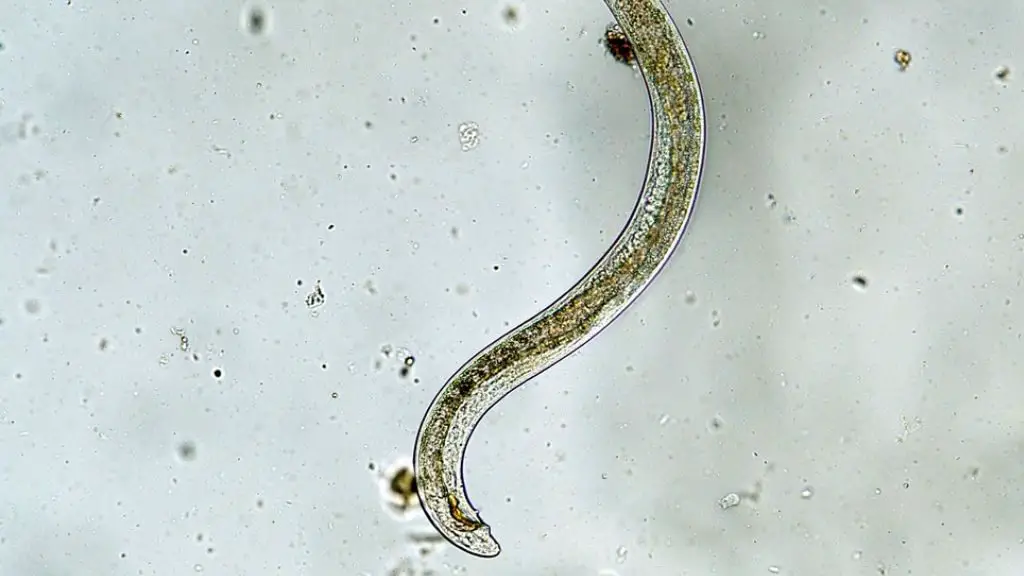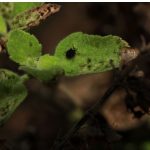Are you seeing White Worm in Soil? Then start worrying!

We all know that the organisms in the soil can either improve plant quality or deteriorate it to the extent that even death of plants occurs. That is why it is important to keep an eye on the organisms roaming around in the soil near the roots. In doing this, you may observe White Worm in Soil.
These white worms can either be your friend or your worst enemy. People ask, is White Worm in Soil a threat to plants and the answer depends upon the type of worm present in the soil. Want to know how many white worms there are and how many are harmful among them? Well, Don’t worry because we are here for you with answers!
What is the white worm in soil?
People ask, Are white worms in soil good or bad? Well, generally, they are harmful to the plants. But this is not always the case as if some worms are not in larger quantity, they do not cause any significant damage. Moreover, there are some beneficial worms like earthworms that also exist which every gardener loves.
You can see different types of worms in potted plants, however, the following are those worms that are white in color.
Fungus Gnats’ Larvae
If you are witnessing white worms in the soil outside or inside, then we have news for you. These are actually not worms but the larvae of fungus gnats in soil. Fungus gnats are the black bugs that you see around houseplants. Although they are harmless, their larvae cause significant harm.
Adult Fungus gnats love wet soil, and when they see one, they lay their eggs. After three days, the hatching of eggs happens and larvae come out.
The white larva worm in soil feeds on the fungi and organic matter, thus depriving plants of important nutrients. Moreover, if there is nothing to eat, the fungus gnats larvae will start eating the roots of the plants. Due to this feeding, the affected plants look very similar to the root rot disease-infected plants. Now you can imagine how bad these larvae are for plants, right?
So, Long story short, if you see a big white worm in soil, then chances are it is fungus gnats larva. You should prepare yourself mentally that your plants are now going to show poor growth. If the population of these larvae is not controlled, then young plants may die as well.

Pot Worms
If the white worms in the soil outside are not fungus gnats larvae, then the worms you are seeing can be pot worms. Pot worms are tiny worms with white bodies and are present in large numbers. Pot worms are generally mistaken for young red wiggles. They are also mistaken for earthworms which are tiny brown worms in plant soil. These are also called worms with legs in soil. However, earthworms are not harmful as compared to other worms or larvae.
Its larvae are not easy to spot which leads to delay in the treatment. To make the matter worse, they are always present in large numbers. According to a general estimate, 2500 pot worms are present in 1 square foot.
Pot worms love slightly acidic soil. Thus, when you apply something acidic like fertilizers, these worms spring up.
These worms are generally not bad for plants. Moreover, Due to their movement, soil aeration gets to improve and roots receive more oxygen.
However, if their population exceeds in numbers, then they may start competing with every beneficial white tiny worm in soil for food and nutrition.
Grub Worms
Grub worm is neither a worm nor a larva of a single insect. Grub worms are the larvae of Christmas Beetle, African Black Beetle, Scarab Beetles, etc. The larva of the Japanese Beetle is also greyish white. As all of these larvae look alike, so they are given a single name- Grub Worms.
These are the bad worms in garden soil. The larvae are white in color, have a plumpy body, and are 3 centimeters long. Female insects lay their eggs 2-4 inches deep into the soil. Then nearly after a month, grub worms emerge and start feeding on organic matter and plant roots.
The major concern is that their Grub worms’ larvae stage lasts for several months. During this time, even one white fat worm in the soil keeps eating organic matter and roots which severely harms the plant.
But they don’t stop here. After several months, when these larvae turn into adults, they start feeding on the plant leaves. That is why these white worms are considered one of the biggest enemies of the gardeners.

Parasitic Nematode- The thin white worm in soil
If you are seeing tiny white worms in garden soil, chances are these might be parasitic nematodes. Nematodes are soft-bodied creatures with no legs. They have a non-segmented body that looks like a whitish tube.
Plant Parasitic Nematode is found in the soil and is very harmful. This white tiny worm in soil attacks roots, foliage, and flowers. As a result, the overall quality and appearance of the plant deteriorate.

In addition to these tiny white worms in garden soil, there may also be red worms, maggots, cutworms, lawn grubs, etc present in the soil.
How to get rid of white worms in potted plants?
Want to know how you can get rid of white worms in soil? Then this section is for you. Here, we are discussing each worm and the proven treatments against it.
How to get rid of Fungus Gnats?
You can do the following things to get rid of fungus gnats’ larvae:
1) Fungus gnats young ones love wet soil. So, to control their population, you have to stop overwatering plants. Let the first three inches of soil dry before watering again. This will also prevent any fungal infection to appear. You can also use a soil moisture meter to know about the moisture content in the soil.
As a precaution, put the pot in a well-lighted area where plenty of sunlight falls on the plants. This will help plants deal with the excess moisture and you will get rid of these bad worms in garden soil quickly.
2) Moreover, remove all the fallen leaves and other debris from the pots as this big white worm love to feed on them.
3) Neem Oil solution to the soil or you can also drench it. All you have to do is Mix 1 and a half tablespoons in a liter and apply the solution onto the soil. You can also add liquid soap to the solution to make it more effective. You can also use Hydrogen Peroxide solution to get rid of the adult gnats and their larvae (fat white worm) in the soil.
4) You can also apply chemical insecticides or Pesticides to kill larvae of fungus gnats. Bacteria Bacillus thuringiensis can also kill larvae of fungus gnats.
5) Growers are also using Castile oil to reduce the infestation of these larvae. Mix only 1 teaspoon in a liter of water and then apply it to kill larvae of fungus gnats in the soil.
How to get rid of Pot worms?
People often ask, how to get rid of white worms in potted plants effectively. You can do the following things to deal with these tiny white worms in garden soil (pot worms):
1) You should increase the alkalinity of the soil to get rid of this white thin worm in the soil. Add lime or wood ash to the soil or compost pile to increase alkalinity/reduce acidity. As Pot worms love acidic soil and hate basic, they will immediately move out.
2) You can also apply neem oil to get rid of this little white worm in the soil.
How to get rid of Grub Worms?
Grub worms are one of the harmful worms a grower can deal with. Follow the following recommendations if you see grub worms:
1) Neem oil is super effective against these larvae and adults.
2) Organisms like praying mantis, fireflies, birds, and frogs are also effective in getting rid of these bad worms in garden soil. They feed on Japanese beetle grubs and other white beetles.
3) You should also consider replacing the soil if the infestation is severe. Take out the topsoil of the plant, apply organic pesticide, and add new, well-fertilized soil to the plants.
How to get rid of Nematodes?
Deal with the Plant-parasitic nematodes in the following ways:
1) Re-potting is a viable solution to get rid of this white worm. When you do this with care, then this white thread-like worm in the soil won’t appear again.
Get a spade and remove the top one inch of the soil. Put this soil in a bag, close it and dispose it of. Then apply pesticide. After that, add new soil to the pot. Let it rest and dry before watering again.
2) You can do mulching to heat the soil. Heating the soil is an effective way to kill these nematodes.
Final Thoughts
All in all, White Worm in Soil is a thing to worry about. Majority of these white worms damage plant roots, which leads to yellowing of leaves, poor fruit yield, stunted growth, and eventually death of plants. Entomologically speaking, the white worms you are seeing are not worms. They are the larvae of fungus gnats, Christmas Beetle, African Black, Scarab Beetles, pot worms, and plant-parasitic nematodes.
To get rid of them, follow the methods we have described above. A smart gardener takes care of his plants and soil, and you should not think less than a smart gardener!
FAQs About White Worm in Soil
How do I get rid of white worms in my soil?
White Looking worm in the soil must be treated carefully. You can get rid of any white worm in soil by using several methods. You can apply neem oil, castile soap solution, and chemical pesticides. Moreover, you can also consider repotting the soil to get rid of harmful nematodes. You should also stop overwatering and overfertilizing your plants as pot worms and fungus gnats larvae love such soil.
Are white worms bad?
Growers frequently ask, Are white worms in soil good or bad. The answer is Yes, most of the white worms like Grub worms, fungus gnats’ larvae, and plant-parasitic nematodes are bad. However, some white worms like pot worms and beneficial nematodes are not bad. In fact, they improve the soil structure which benefits roots.
How do you get rid of soil worms?
To get rid of soil worm infestation, you can do neem oil application, pesticide application, Castile oil application, mulching, and repotting of soil. Moreover, stop overwatering and overfertilization if you want these treatments to succeed.
What are the white caterpillars in soil?
The white caterpillars you are seeing in or on the soil surface are larvae of fungus gnats, pot worms, plant-parasitic nematodes, and beetles (Christmas, African, & Scarab Beetles). Except for larvae of fungus gnats, everyone looks like little white worms or white thread-like worms in the soil. Fungus gnats larvae look like a fat white worm in the soil.
Related Topics:








